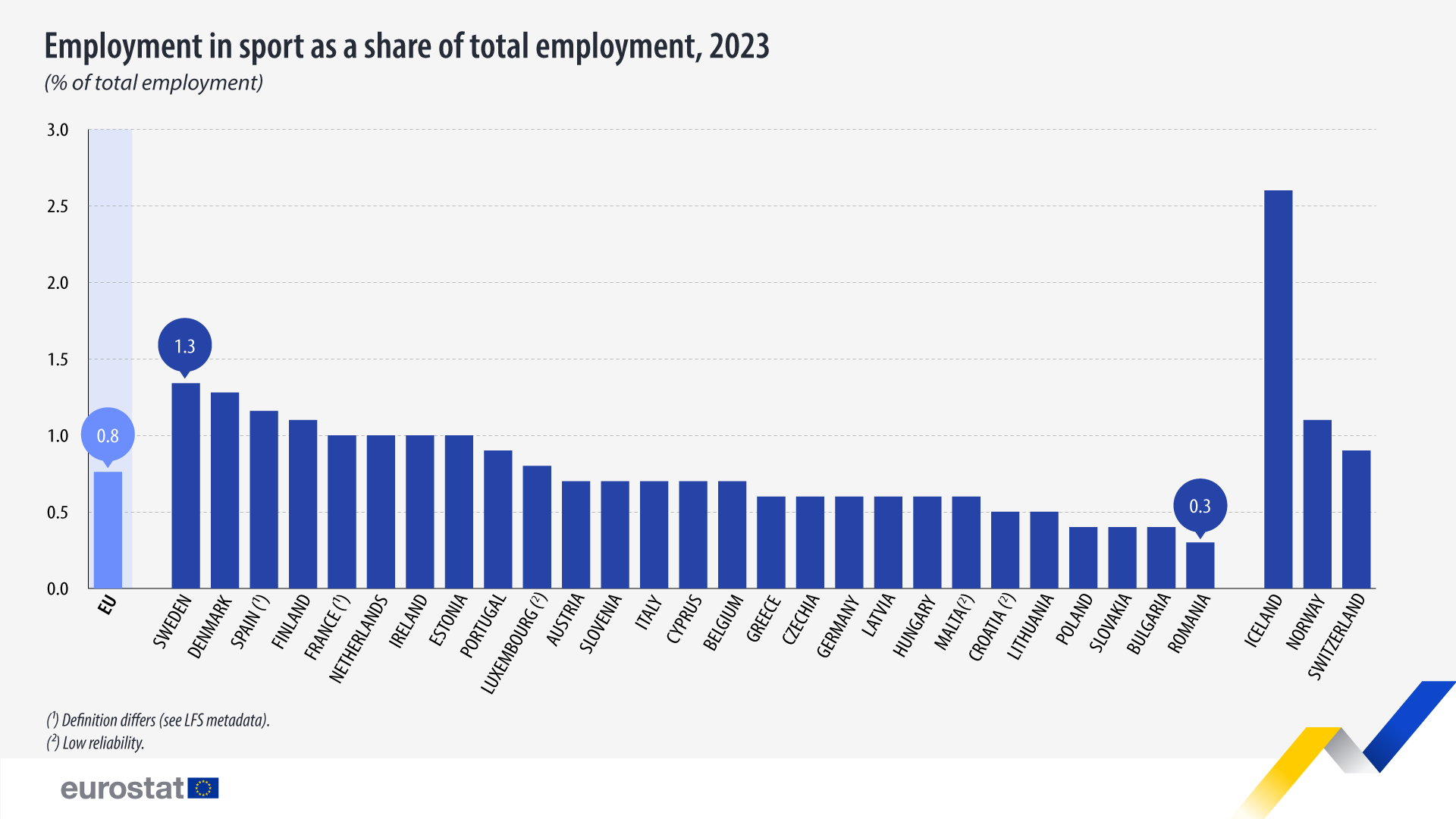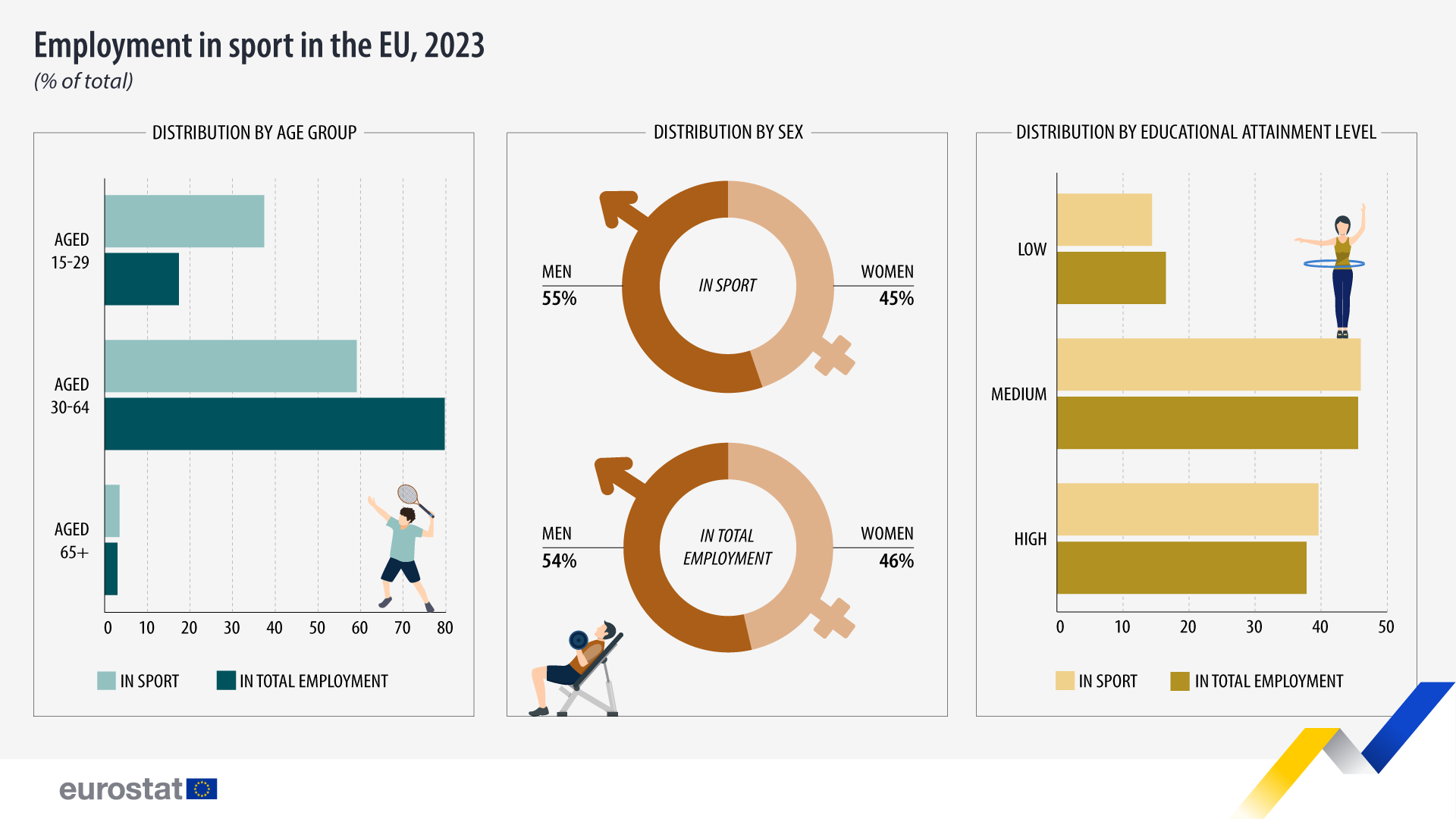In 2023, 1.55 million individuals had been employed within the sports activities sector within the EU, representing 0.76% of complete employment. In contrast with 2022 (1.51 million), the variety of individuals employed within the sports activities sector elevated by 2.2%.
Among the many EU nations, Sweden had the very best share of individuals working within the discipline of sports activities (1.33% of complete employment), adopted by Denmark (1.25%) and Spain (1.16%).
In distinction, the bottom shares of individuals employed within the sports activities sector had been registered in Romania (0.28% of complete employment), Bulgaria (0.37%) and Slovakia (0.40%).

Supply dataset: sprt_emp_sex
Over one-third of sports activities employees beneath the age of 30
Employment within the sports activities sector differs from complete employment by way of age composition. A couple of-third (37.4%) of individuals employed in sport had been aged 15 29, which is greater than twice the share reported in general employment (17.4%) for a similar age group in 2023.
The vast majority of these employed in sport had been aged 30-64, accounting for 59.1% of all sport employees, which was 20.6 share factors (pp) lower than the share of the identical age group within the complete employment (79.7%). Folks aged 65+ accounted for 3.5% within the sports activities sector and three.0% in complete employment.

Supply datasets: sprt_emp_age, sprt_emp_sex, sprt_emp_edu
Extra males had been employed within the sports activities sector than ladies (55.2% and 44.8%, respectively), resulting in a barely bigger gender employment hole of the inhabitants employed on this sector in contrast with general employment (53.6% and 46.4%, respectively).
By way of academic attainment degree, sports activities employees exhibited traits much like these within the complete employment. Practically half (45.9%) of these employed in sport had a medium degree of schooling (Worldwide normal classification of schooling (ISCED), ranges 3-4), 0.3 pp greater than in complete employment.
These with larger (tertiary) schooling (ISCED ranges 5-8) made up 39.6% of sport employees, which was 1.8 pp larger in sport than in complete employment.
Folks with decrease schooling (ISCED ranges 0-2), accounted for 14.4% of employment in sport (2.1 pp decrease than in complete employment).
This text is printed to mark the opening of the 2024 Summer time Olympic Video games.
For extra data
Methodological notes
- Employment in sport contains sport-related occupations within the sports activities sector e.g., skilled athletes, skilled coaches in health centres, non-sport occupations within the sports activities sector, e.g., receptionists in health centres, and sport-related jobs outdoors the sports activities sector, e.g., college sport instructors.
- The sport sector contains financial actions and occupations comparable to in sport groups and golf equipment, trainers, impartial athletes, health centres and actions for the promotion and administration of sport occasions.
- New methodology from 2021 for EU Labour Drive Survey.
- Luxembourg, Croatia and Malta: low reliability for 2023.
- France and Spain: 2021-2023 definition differs (see Labour Drive Survey methodology metadata).